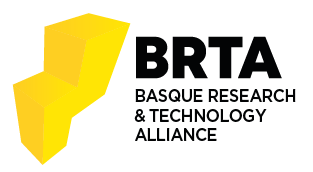Adaptive Distributed Beacon Congestion Control with Machine Learning in VANETs
Authors: ZALOA FERNANDEZ
Date: 13.04.2022
Proceedings - 2021 17th International Conference on Mobility, Sensing and Networking, MSN 2021
Abstract
Many Intelligent Transportation System (ITS) applications rely on communication between fixed ITS stations (roadside installations) and mobile ITS stations (vehicles) to provide traffic safety. In VANETs, the Control Channel (CCH) and Service Channels (SCHs) are applied to transmit the safetyrelated data. The CCH used in IEEE 802. 11p standard for exchanging high-priority safety messages and control information and it can be easily congested by high-frequency periodic beacons under high density scenarios. Also, employing the DedicatedShort Range Communication (DSRC) band of IEEE 802.11p standard can hardly satisfy the requirements of high-critical safety applications. Also, transmitting safety beacons at a constant rate regardless of considering the condition of the links leads to the lack of flexibility and medium resources to support meeting the reliability requirements of these applications. In this paper, we evaluate a beacon rate control method, which assigns a higher beacon rate to nodes based on link conditions, i.e. with more surrounding nodes and better conditions to disseminate beacons. On the other hand, as IEEE 802.11p Medium Access Control (MAC) layer does not perform well under high channel load, so in this paper, we use Self-organizing Time Division Multiple Access (STDMA) in our simulations as MAC layer protocol. The results of the simulations demonstrate the rate of beacon transmission/reception effectively improves, results in better resource utilization. Also, Packet Error Rate (PER) and Packet Inter-Reception time (PIR) decrease significantly which is crucial for safety applications.
BIB_text
author = {ZALOA FERNANDEZ},
title = {Adaptive Distributed Beacon Congestion Control with Machine Learning in VANETs},
journal = {Proceedings - 2021 17th International Conference on Mobility, Sensing and Networking, MSN 2021},
pages = {771},
keywds = {
Distributed Beacon Congestion, Machine Learning, VANETs, IEEE 802.11p, STDMA, Medium Access Control (MAC), Intelligent Transportation System (ITS)
}
abstract = {
Many Intelligent Transportation System (ITS) applications rely on communication between fixed ITS stations (roadside installations) and mobile ITS stations (vehicles) to provide traffic safety. In VANETs, the Control Channel (CCH) and Service Channels (SCHs) are applied to transmit the safetyrelated data. The CCH used in IEEE 802. 11p standard for exchanging high-priority safety messages and control information and it can be easily congested by high-frequency periodic beacons under high density scenarios. Also, employing the DedicatedShort Range Communication (DSRC) band of IEEE 802.11p standard can hardly satisfy the requirements of high-critical safety applications. Also, transmitting safety beacons at a constant rate regardless of considering the condition of the links leads to the lack of flexibility and medium resources to support meeting the reliability requirements of these applications. In this paper, we evaluate a beacon rate control method, which assigns a higher beacon rate to nodes based on link conditions, i.e. with more surrounding nodes and better conditions to disseminate beacons. On the other hand, as IEEE 802.11p Medium Access Control (MAC) layer does not perform well under high channel load, so in this paper, we use Self-organizing Time Division Multiple Access (STDMA) in our simulations as MAC layer protocol. The results of the simulations demonstrate the rate of beacon transmission/reception effectively improves, results in better resource utilization. Also, Packet Error Rate (PER) and Packet Inter-Reception time (PIR) decrease significantly which is crucial for safety applications.
}
doi = {10.1109/MSN53354.2021.00120},
date = {2022-04-13},
}







